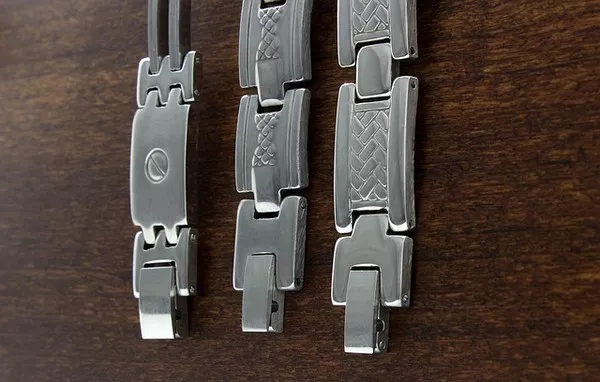Silver, known for its versatility and intrinsic value, has been a popular investment choice for centuries. As an asset class, it offers a unique combination of affordability and potential for appreciation. However, for both new and seasoned investors, identifying the cheapest silver to buy can be a strategic move to maximize returns. This comprehensive guide delves into the various forms of silver, factors affecting their prices, and strategies to buy silver at the lowest cost.
Understanding Silver Investment Options
Silver comes in various forms, each with its own market dynamics and pricing structures. The primary categories include:
- Silver Bullion Coins
- Silver Bars
- Junk Silver
- Silver Rounds
- Silver ETFs and Stocks
Each of these categories has its pros and cons, and understanding them is crucial for making an informed investment decision.
Silver Bullion Coins
Silver bullion coins are minted by government mints and are legal tender in their countries of origin. Some of the most popular silver bullion coins include the American Silver Eagle, Canadian Silver Maple Leaf, and the Austrian Silver Philharmonic.
Pros:
- Liquidity: Widely recognized and easily tradable.
- Purity and Weight: Guaranteed by government mints.
- Collectible Value: Some coins gain numismatic value over time.
Cons:
- Premiums: Higher premiums over the spot price due to minting costs and collectible value.
- Counterfeit Risk: Despite being lower than bars, counterfeits do exist.
While silver bullion coins are highly liquid and widely recognized, their higher premiums make them less attractive for those looking for the cheapest silver.
Silver Bars
Silver bars are a favorite among serious investors due to their lower premiums per ounce compared to coins. They come in various sizes, from 1 ounce to 1000 ounces.
Pros:
- Lower Premiums: Generally have lower premiums over the spot price than coins.
- Variety of Sizes: Offers flexibility in terms of investment amounts.
- Storage Efficiency: Easier to store in bulk.
Cons:
- Liquidity: May be less liquid than coins, especially larger bars.
- Counterfeit Risk: Higher risk, particularly with larger bars.
- Assay Costs: Potential additional costs for verification when selling.
Silver bars are an excellent choice for those looking to buy silver at the lowest cost per ounce, especially if bought in larger quantities.
Junk Silver
Junk silver refers to old coins that contain a significant amount of silver but are not collectible due to their worn condition. Common examples include pre-1965 U.S. dimes, quarters, and half-dollars, which contain 90% silver.
Pros:
- Low Premiums: Often sold at a lower premium over the spot price.
- Recognizability: Widely recognized and easy to authenticate.
- Fractional Sizes: Ideal for smaller investments and barter situations.
Cons:
- Condition: Worn coins may have less silver content than expected.
- Bulk Purchase: Often sold in bulk, requiring more storage space.
- Limited Supply: Limited to the available stock of pre-1965 coins.
Junk silver is a cost-effective way to invest in silver, particularly for those interested in fractional denominations and lower premiums.
Silver Rounds
Silver rounds are privately minted coins that typically contain one ounce of silver. They resemble silver bullion coins but do not have legal tender status.
Pros:
- Lower Premiums: Generally lower premiums than government-minted coins.
- Standardization: Usually minted in 1-ounce increments.
- Design Variety: Available in a wide range of designs.
Cons:
- Recognition: Less recognized than government-minted coins.
- Resale Value: May have lower resale value and liquidity.
- Counterfeit Risk: Higher risk compared to bullion coins.
Silver rounds offer a balance between the lower premiums of bars and the convenience of coins, making them an attractive option for cost-conscious investors.
Silver ETFs and Stocks
For those who prefer not to hold physical silver, silver ETFs (Exchange-Traded Funds) and mining stocks provide indirect exposure to silver prices.
Pros:
- Convenience: Easy to buy and sell through brokerage accounts.
- No Storage Issues: Eliminates the need for physical storage.
- Liquidity: Highly liquid with the ability to trade during market hours.
Cons:
- No Physical Ownership: Lack of physical silver ownership can be a drawback for some.
- Management Fees: ETFs come with management fees that can erode returns.
- Market Risk: Subject to market fluctuations and financial risks of the issuing entities.
While silver ETFs and stocks provide exposure to silver prices without the hassle of physical storage, they do not offer the tangible benefits of owning physical silver.
Strategies for Buying the Cheapest Silver
To buy silver at the lowest cost, consider the following strategies:
Buy in Bulk: Purchasing larger quantities often reduces the premium per ounce.
Shop Around: Compare prices from various dealers to find the best deals.
Avoid High-Premium Items: Focus on products with the lowest premiums over spot price.
Consider Secondary Market: Look for deals on the secondary market, including auctions and peer-to-peer sales.
Monitor Market Trends: Keep an eye on silver prices and buy during dips.
Factors Affecting Silver Prices
Understanding the factors that influence silver prices can help you make better investment decisions. Key factors include:
Supply and Demand: Industrial demand, mining production, and recycling impact prices.
Economic Conditions: Inflation, interest rates, and currency strength affect silver prices.
Geopolitical Events: Political instability and global events can drive demand for silver as a safe-haven asset.
Market Speculation: Investor sentiment and speculative trading play significant roles.
See Also The Spiritual Significance of Silver
Conclusion
Finding the cheapest silver to buy involves understanding the different forms of silver and their associated costs. Silver bars and junk silver often offer the lowest premiums, making them attractive options for cost-conscious investors. By employing strategic buying methods and staying informed about market dynamics, you can effectively invest in silver at the lowest possible cost. Whether you choose physical silver or financial instruments, silver remains a valuable addition to a diversified investment portfolio.


